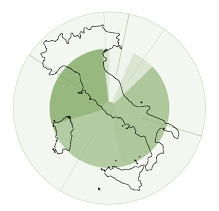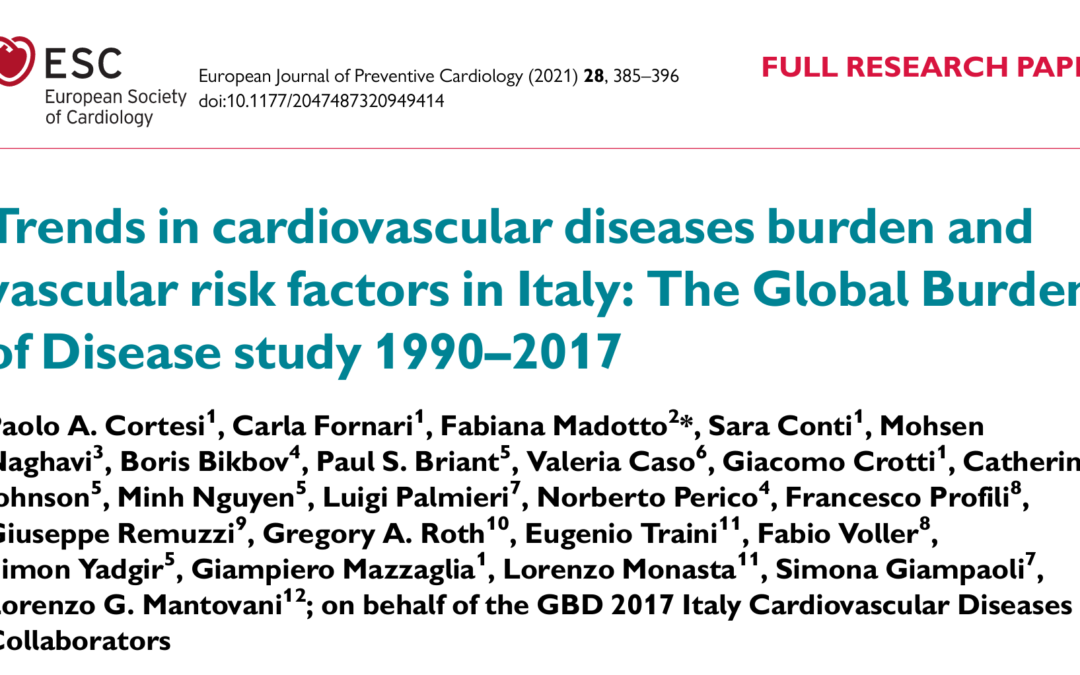Cardiovascular diseases (CVDs) are still the leading cause of mortality, morbidity and disability in Europe. CVDs are responsible for 45 percent of deaths and cause 3.9 million deaths in Europe each year. In Italy, CVDs also retain the top spot as a cause of death, morbidity and disability. However, data on the epidemiology and health burden of major cardiovascular diseases remain fragmented and uneven. Data are even more fragmented for relevant CVDs such as abdominal aortic aneurysm, heart failure, and atrial fibrillation.
An analysis of the prevalence, mortality, and health burden associated with CVDs in Italy from 1990 to 2017 was conducted using estimates from the Global Burden of Diseases (GBD) project in order to fill the need for updated, comprehensive, and standardized estimates.
All accessible data from GBD 2017 were used to estimate the prevalence, mortality, and disease burden of 11 cardiovascular conditions: chronic rheumatic heart disease, ischemic heart disease, stroke, hypertensive heart disease, cardiomyopathies and myocarditis, atrial fibrillation and flutter, aortic aneurysm, peripheral vascular disease, endocarditis, non-rheumatologic heart valve disease, and other cardiovascular and circulatory diseases. To calculate the burden of disease, the GBD uses Disability Adjusted Life Years (DALYs) a measure to estimate overall health loss by summing the years of life lost due to disease with those lived with disability due to the disease. GBD data were also used to assess cardiovascular risk attributable to different risk factors.
The study found that there has been a significant reduction in the health burden associated with CVDs from 1990 to 2017. In particular, a reduction in prevalence (-12.7%), mortality (-53.8%) and age-adjusted DALYs (-55.5%) was observed. These reductions can be partially attributed to the results of a number of interventions and changes observed in Italy for the prevention and management of CVDs. These include Prevention programs, healthy diet and lifestyle policies, improved diagnostic methods and hospital procedures, and improved drug therapies.
Despite the observed reductions, the study also reported an increase from 5.75 million in 1990 to 7.49 million in 2017 of individuals with CVDs in Italy. Moreover, CVDs remained the leading cause of death, counting for 34.8% of all deaths. These results could be partly explained by the aging of the Italian population, modest population growth, and increased survival to cardiovascular events (due to technological innovation).
Finally, among the results of this study, it should be noted that more than 80% of the burden of disease attributable to CVDs was found to be associated with modifiable risk factors such as elevated systolic blood pressure, diet, and elevated LDL levels.
In conclusion, this study showed a decline in mortality and DALYs associated with CVDs, reflecting success in reducing disability, premature deaths, and early incidence of CVDs. However, the health burden associated with CVDs is still very high. An approach that includes cooperation and coordination of all stakeholders in the Italian National Health Service is needed to further reduce the impact of CVDs.
Cortesi PA, Fornari C, Madotto F, Conti S, Naghavi M, Bikbov B, the GBD 2017 Italy Cardiovascular Diseases Collaborators, Trends in cardiovascular disease burden and vascular risk factors in Italy: The Global Burden of Disease study 1990-2017, European Journal of Preventive Cardiology, Volume 28, Issue 4, April 2021, Pages 385-396, https://doi.org/10.1177/2047487320949414

